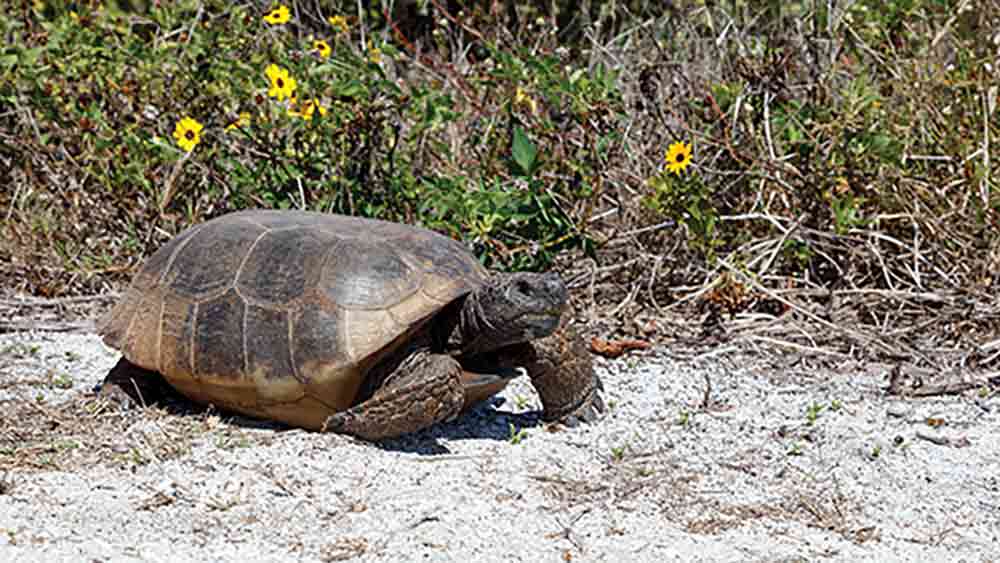The gopher tortoise is a federally endangered species that is listed as vulnerable by the International Union for Conservation of Nature (IUCN).
The Florida Fish and Wildlife Conservation Commission has issued an executive order that allows temporary deviations from the state’s Gopher Tortoise Permitting Guidelines. The EO is an attempt to address the high demand for gopher tortoise placement at recipient sites, as the state deals with construction on gopher tortoise locales. The order gives FWC staff the capacity to deviate from the guidelines, which can be read on the FWC website.
The FWC says approved alternatives under the EO will be “temporarily authorized by FWC as a permit condition,” and any activities that are conducted without an FWC permit that has an impact on the tortoises or their burrows may be a violation of state law.

MATTHEW YODER/SHUTTERSTOCK
“Permitting for development sites has increased significantly over the past few years, increasing the demand for recipient site capacity,” the FWC wrote in announcing the executive order. “Nearly 3,000 gopher tortoise relocation permits have been issued in 2021 alone, representing about 20% of all permits issued since 2008. The significant increase in permitting throughout the state has led to recipient site managers often being unable to accommodate the increased demand for relocation, leading to shortages in available reservations and increased permitting costs.”
“The Executive Order supports implementation of the Guidelines to protect the health and safety of tortoises while ensuring long-term success of the program. The EO is in place for 90 days, beginning on November 18th. The need to extend the Order, and the temporary provisions provided therein, will be evaluated towards the end of this 90-day period. All permit applications and associated projects will be reviewed individually and any deviations from the Guidelines will be considered on a case-by-case basis, depending on the project’s specifications, the site-specific need, and the availability of gopher tortoise reservations or recipient site capacity at that time.”
Gopher Tortoise Information
The gopher tortoise is a federally endangered species that is listed as vulnerable by the International Union for Conservation of Nature (IUCN). It is considered a keystone species by scientists, due to its burrowing nature, which then helps an estimated 360 other animal species who take advantage of those networks of tunnels. The reptile averages about a foot long and can be found in along the coastal plains of the Southeastern United States, including South Carolina, Georgia, Florida, southern Alabama, Mississippi, and southeastern Louisiana. Gopher tortoises dine primarily on grasses in the wild and can eat beans, corn and most fruit. It is protected throughout its range and requires a permit to keep.



